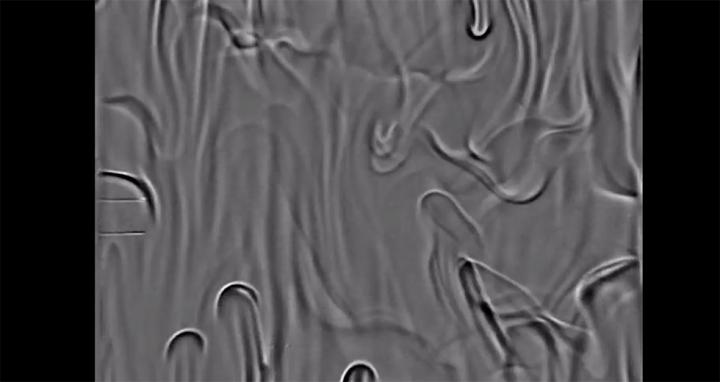
Turbulent heat exchangers, which are widely used in heating, ventilation and air conditioning (HVAC) systems are fairly simple devices that use the natural movements of liquid to move heat. They consist of a hot surface, a cold surface and tank of liquid in between. Near the hot surface, the liquid heats up, becomes less dense and forms warm plumes that rise toward the cold side. There, the liquid loses its heat, becomes denser and forms cold plumes that sink back down toward the hot side. The cycling of water serves to regulate the temperatures of each surface.
The latest breakthrough is based on work carried out by Tsinghua professor, Chao Sun, who originally had the idea of using an organic component known as hydrofluoroether (HFE) to speed the cycling of heat inside this kind of exchanger.
HFE is sometimes used as the sole fluid in heat exchangers, but Sun suspected that it might have more interesting properties as an additive in water-based systems. Sun and his team experimented with adding small amounts of HFE and, after three years of work, were able to maximize its effectiveness in speeding heat exchange. The team showed that concentrations of around one per cent HFE created dramatic heat flux enhancements up to 500 per cent.
"Other methods for increasing heat flux - nanoparticle additives or other techniques have achieved at best about 50 per cent improvement," said Varghese Mathai, a postdoctoral researcher at Brown and co-first author of a study on the work published in Nature Communications. “What we achieve here is 10 times more improvement than other methods, which is really quite exciting."
Using high-speed imaging and laser diagnostic techniques, the researchers were able to show how the HFE enhancement works. When near the hot side of the exchanger, the globules of HFE quickly boil, forming biphasic bubbles of vapour and liquid that rise rapidly toward the cold plate above. At the cold plate, the bubbles lose their heat and descend as liquid. The bubbles affect the overall heat flux in two ways, the researchers showed. The bubbles themselves carry a significant amount of heat away from the hot side, but they also increase the speed of the surrounding water plumes rising and falling.
"This basically stirs up the system and makes the plumes move faster," Sun said. "Combined with the heat that the bubbles themselves carry, we get a dramatic improvement in heat transfer."
"This biphasic approach generates a very large increase in heat flux with minimal modifications to existing heating and cooling systems," added Mathai. "We think this has great promise to revolutionise heat exchange in HVAC and other large-scale applications."


Swiss geoengineering start-up targets methane removal
No mention whatsoever about the effect of increased methane levels/iron chloride in the ocean on the pH and chemical properties of the ocean - are we...